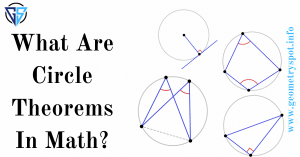Unlocking the Secrets: 11 Mind-blowing Insights into the Formula For Distance Between Two Parallel Lines

The mere mention of it can evoke a range of emotions. Some might cringe, recalling endless hours of drawing angles and calculating areas, while others light up at the notion of a world that’s defined by logic and symmetry. Geometry is a branch of mathematics that’s as old as the hills yet as young as the latest research in string theory. It helps us make sense of the world around us, from the towering skyscrapers to the smartphone in your pocket. It’s not just numbers and equations; it’s a lens through which we see the world.
Why Understanding Parallel Lines Matters

Now, let’s narrow our focus to a specific geometric concept—parallel lines. You might be thinking, “Why should I care about parallel lines?” Well, that’s a fair question! Understanding the distance between parallel lines is more than just academic jargon. It’s about grasping the relationships that govern space. These concepts are crucial in a wide range of fields, from architecture and engineering to graphic design and video games. So, buckle up! You’re in for an enlightening journey.
The Basics of Parallel Lines

What Makes Lines Parallel?
In layman’s terms, parallel lines are like estranged friends—they run alongside each other but never meet. Mathematically speaking, parallel lines have the same slope but different y-intercepts. They can stretch to infinity and beyond but will never cross paths. So, if you’re looking at the equations of two lines and notice that the slopes are identical, bingo! You’re looking at parallel lines.
Real-world Examples of Parallel Lines
You don’t need to be a math whiz to encounter parallel lines; they’re all around you. Ever looked at a railroad track stretching into the distance? Parallel lines. How about the lanes of a highway, the stripes on a soccer field, or even the rows of corn in a farm? All examples of parallel lines in real life. Understanding the distance between these lines can help in various settings, from planning a city block to laying out an airport runway.
Elementary Math Behind Lines

Slope-Intercept Form
Let’s get down to brass tacks! The slope-intercept form is your bread and butter when it comes to equations of lines. It’s written as �=��+�y=mx+b, where �m is the slope and �b is the y-intercept. This equation is like a treasure map; it tells you how steep the line is and where it crosses the y-axis. So, say goodbye to guesswork and hello to pinpoint accuracy!
Point-Slope Form
If the slope-intercept form is the superhero of line equations, then the point-slope form is the trusty sidekick. Often written as �−�1=�(�−�1)y−y1=m(x−x1), this formula is super handy when you have a point on the line and the slope but no y-intercept. It’s like having a GPS coordinate—once you plug in the numbers, it guides you straight to the line in question.
Introducing the Distance Formula

Basic Distance Formula for Points
Remember the Pythagorean theorem from your school days? The distance formula is basically its grown-up version! It’s written as �=(�2−�1)2+(�2−�1)2d=(x2−x1)2+(y2−y1)2. In simpler terms, it calculates the “as-the-crow-flies” distance between two points in a two-dimensional space. So, whether you’re tracking a soccer ball or a shooting star, this formula has got you covered.
The Judgment Theorem for Similarity of Triangle Angles is a fundamental concept in geometry. It states that when two triangles have equal angles, they are similar, meaning their corresponding sides are proportional. This theorem is crucial for determining the similarity of triangles and plays a significant role in various geometric and trigonometric applications.
Adapting the Formula for Lines
While the basic distance formula works wonders for points, lines are a different ball game. You can’t just “wing it”; you need a special formula to find the distance between two lines. But don’t worry, we’ll dive into this head-first in the next section.
Formula For Distance Between Two Parallel Lines Explained

The Mathematical Representation
Alright, folks, here’s where the rubber meets the road. The formula for the distance between two parallel lines is �=∣�2−�1∣�2+�2D=a2+b2∣c2−c1∣, where �a and �b are the coefficients of �x and �y in the line equations, and �1c1 and �2c2 are their constants. Voila! A concise formula that does all the heavy lifting for you.
Importance in Various Fields
You might be wondering, “When am I ever gonna use this?” Well, the answer is more often than you’d think! This formula is crucial in fields like civil engineering, cartography, and even art. Imagine trying to build a skyscraper without knowing the exact distances between its foundational lines. Not a pretty picture, is it?
Step-By-Step Guide to Using the Formula
Example One: In a Two-Dimensional Space
Okay, let’s roll up our sleeves and get our hands dirty with an example. Say you have two lines �=3�+4y=3x+4 and �=3�−2y=3x−2. Plug these values into the formula, and boom! You get �=∣4−(−2)∣32+12=1D=32+12∣4−(−2)∣=1. Simple as pie.
Example Two: In Real-world Applications
Let’s step out of the classroom and into the real world. Imagine you’re an architect planning a building with parallel load-bearing walls. Knowing the distance between these walls could be the difference between a structure that stands the test of time and one that, well, doesn’t. In this case, the formula is not just a string of numbers; it’s a tool that ensures safety and longevity.
The Role of Distance in Geometry

How Distance Impacts Shape and Size
You know what they say: “Size matters!” But in geometry, it’s not just about how big something is; it’s also about how the different parts relate to each other. Distance plays a pivotal role in defining shapes and sizes. If you change the distance between parallel lines, for instance, you’re essentially modifying the dimensions of a rectangle or the diameter of a cylinder. It’s akin to resizing a picture on your computer—everything must scale accordingly.
Distance in Higher Dimensions
Whoa, slow down! Higher dimensions? Sounds like science fiction, doesn’t it? But in the mathematical world, it’s very much a reality. Distance isn’t just a flat, two-dimensional concept; it extends into 3D and even into abstract dimensions. The principles of distance between parallel lines can be adapted into these higher dimensions, helping in fields as diverse as computer graphics and theoretical physics. It’s like stepping into a new universe of possibilities.
Common Pitfalls and How to Avoid Them
Incorrect Slope
Yikes! This one’s a common blunder. Remember, the slope is the backbone of your line equation. Get that wrong, and you’re off to a shaky start. Always double-check your calculations and don’t forget to verify units. A small mistake here can lead to a domino effect of errors.
Wrong Interpretation of Units
Let’s not beat around the bush; units matter! Meters are not the same as feet, and confusing the two can land you in hot water. Always be consistent with your units when using the formula for the distance between parallel lines to avoid any nasty surprises down the line.
The Historical Context
When Was the Formula Discovered?
Ah, a trip down memory lane! The formula has roots going back to the early days of Euclidean geometry, which is over two millennia old. However, its modern algebraic form was developed much later, as mathematicians began to understand the coordinate system better.
Key People in the Development
It’s hard to point to a single individual for this one. The formula is the result of cumulative knowledge, contributed to by mathematical giants like Euclid, Descartes, and more recently, scholars in the field of analytic geometry.
Further Reading and Resources

Books
Books are treasure troves of knowledge and can provide you with in-depth insights that you might not find anywhere else. A couple of recommendations are:
- “Geometry and Its Applications” by Walter Meyer: This book is not just another geometry textbook; it explores real-world applications. Whether you’re an aspiring engineer or just want to understand better how geometric principles apply to everyday life, this book is for you.
- “The Shape of Space” by Jeffrey R. Weeks: Get a grip on the concept of multidimensional spaces, which often comes into play when discussing the distance between parallel lines in higher dimensions. It’s like opening a door to another universe.
Online Courses
Online courses offer the flexibility to learn at your own pace. They also provide the benefit of practical exercises that can help solidify your understanding of key concepts. Here are a couple of options:
- “Introduction to Geometry” on Khan Academy: This course breaks down the complexities of geometry into bite-sized lessons. You get to learn about lines, angles, and, yes, the formula for the distance between two parallel lines.
- “Analytic Geometry: Conic Sections and Parabolas” on Udemy: If you’re up for a challenge and want to explore the role of distance in more complicated geometrical shapes, this is the course for you.
Websites and Blogs
Suppose you’re more into quick reads and articles. In that case, some several educational websites and blogs explain the formula for the distance between two parallel lines in an easy-to-understand manner. Websites like Brilliant.org and Wolfram Alpha offer interactive lessons and step-by-step explanations.
Videos
Websites like YouTube offer a plethora of educational channels that tackle geometry. Channels like Numberphile and 3Blue1Brown offer visual and conceptual understanding, breaking down complex topics into layman’s terms.




